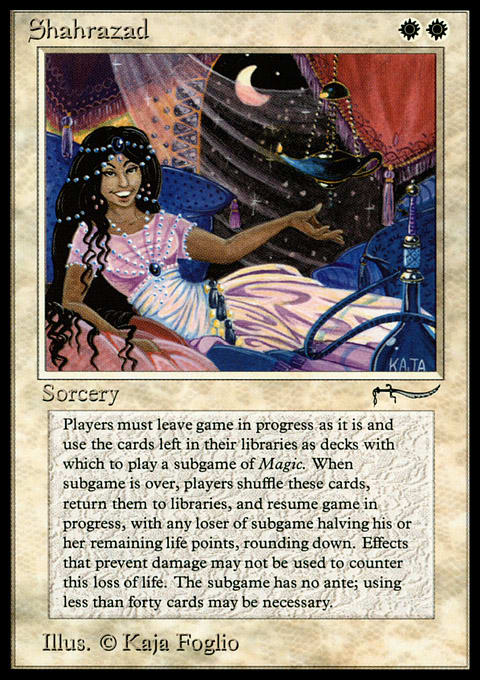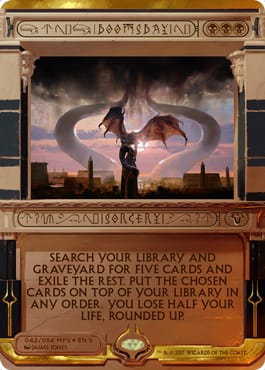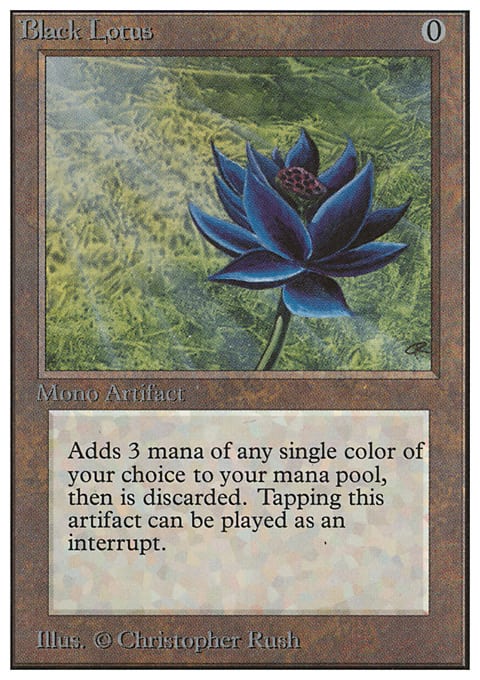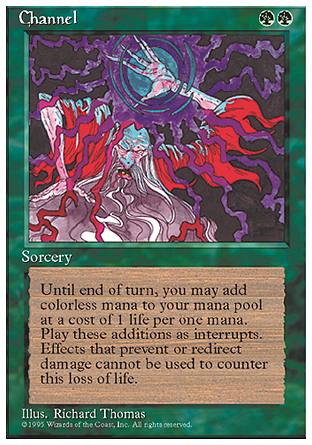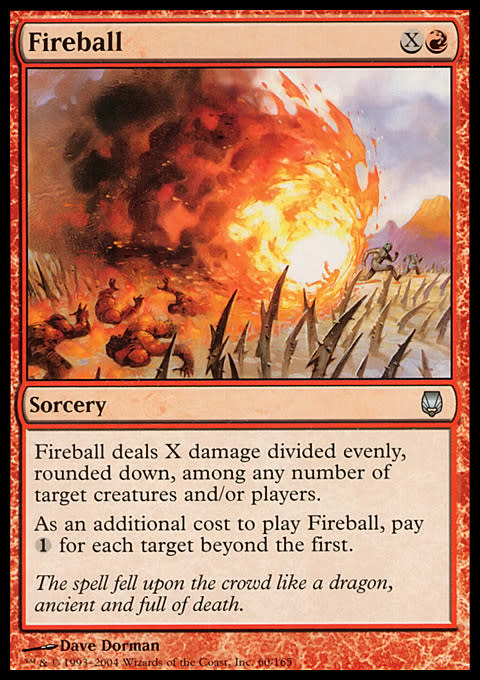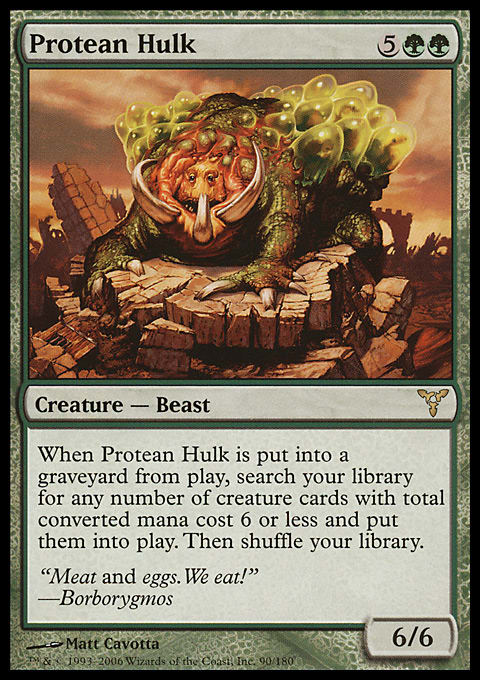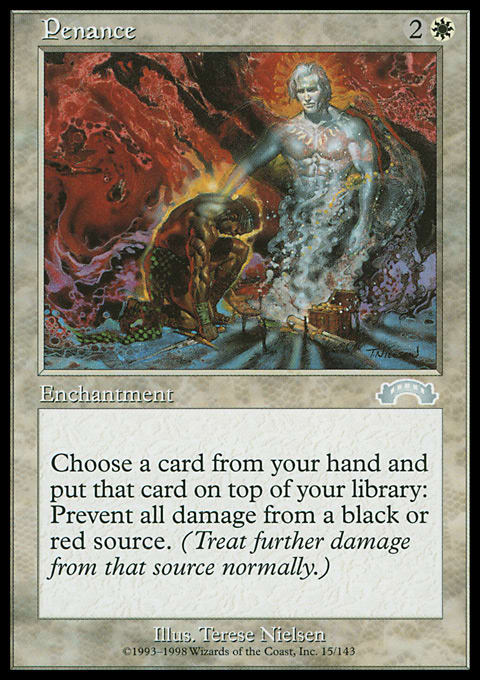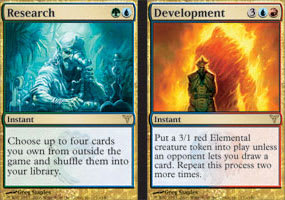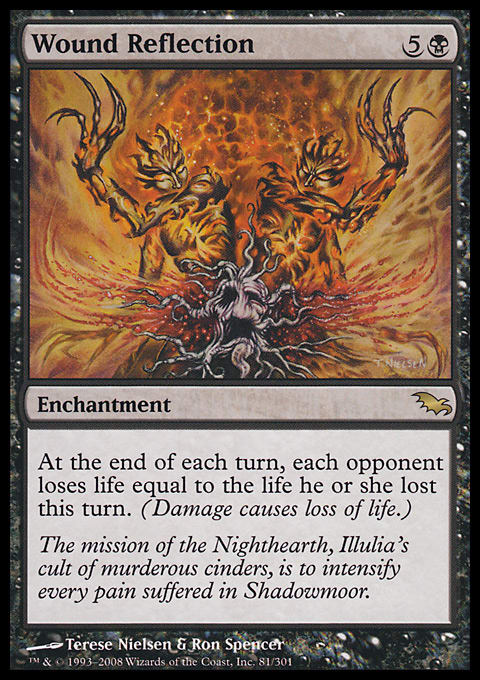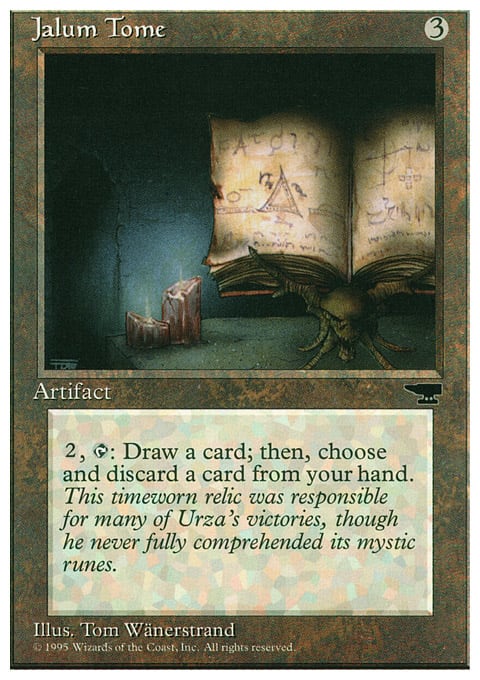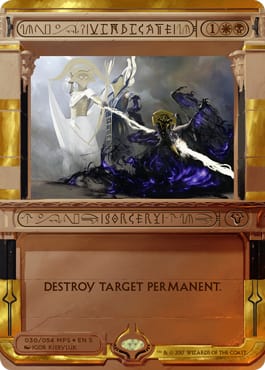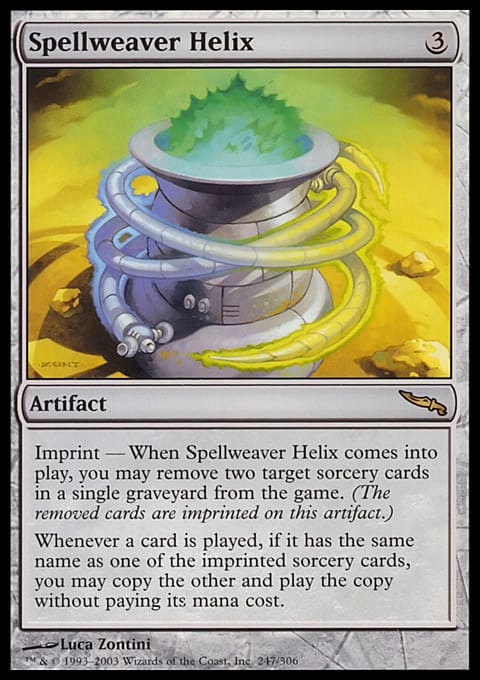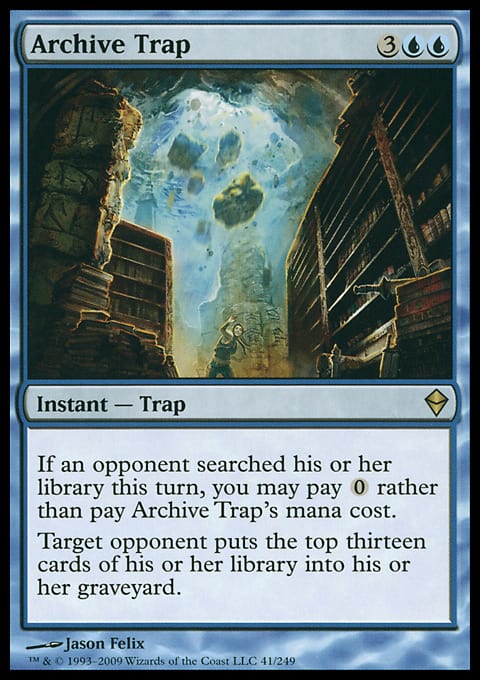In this experiment, we take on the role of a legendary Persian queen and tell the story of the end of the world—well, the end of the world for our opponent at least.
Black Lotus, Channel, Fireball, and Mountain all existed in Limited Edition Alpha, and as components of an opening hand, they are pretty formidable. In fact, they comprise a first-turn win. Hence, since the early days of Magic, various God-hand combinations have been drawing attention, and players have been striving to achieve them. The problem is being lucky enough to draw the required cards in the opening seven.
Today, we remove the luck factor.
You see, Doomsday lets us select five cards, exile the rest, and make those five our new library. And Shahrazad lets us start a subgame with our library as the deck we use in the subgame. That means we are able to weed through our library and graveyard to preselect our sweet setup for the subgame. How about that Black Lotus, Channel, Fireball, and Mountain?
Well, I don’t actually expect most of us actually have access to Black Lotus, and Channel isn’t particularly common either. Magic does have several instant-win starting hands though. The problem is that many of them secretly require more than seven cards. For example, Protean Hulk has some crazy combos associated with it and its synergy with Flash, though a deck using such a combination is filled with low-cost creatures such as Disciple of the Vault. We only have five cards to work with, so anything that requires us to draw more cards—or to have other cards in our deck—isn’t going to function.
In addition, many instant-win hands use more than five cards. We normally start with seven, so why stifle our fantasy by restricting ourselves to five? Well, in this case, Doomsday is setting the restriction. We could work around that if we really had to, but I’d rather stick to a five-card combination.
I’m going on and on about how we’ll be playing with our five Doomsday cards, and you’re probably wondering about how we’ll actually start a game. How can we draw the mandated opening seven if we only have five?
My initial response to this question was this: “Well, Shahrazad isn’t legal in any Constructed Magic format, so there is no official rules support for the card. And since setting up the opening hand doesn’t take place during the actual game, and since setting up that hand isn’t actually drawing cards, state-based actions won’t apply. We can just say we mulliganed to five—or to four on the draw.”
That seems like a perfectly reasonable and fair response; however, here’s a Gatherer ruling on the card from a decade ago:
| 10/4/2004 | At the start of the sub-game both players draw their initial hand (usually 7 cards). If one player has fewer cards than required, that player loses. If both have fewer than required, both players lose. |
That means we will need to make sure we have at least seven cards in our library when we cast Shahrazad, and if we end up on the draw, we’ll need to have at least eight cards so we don’t lose in our draw step. (Though I suppose we could still decide to mulligan and avoid having to have eight.)
Fortunately, we have this:
Leashling would also work, though Penance is less vulnerable, as an enchantment, and it actually supports the defensive theme I went with for the deck. Basically, here’s what this deck will be looking to do: Cast Doomsday for the five combo cards from the graveyard and/or library. Activate Penance however many times is required to have sufficient (seven) cards in the library. If a combo card was in hand, Penance can move it into the Doomsday zone (our library). Cast Shahrazad. Win the subgame on our first turn, and return to the main game with our opponent at half as much life. Our library is reset with our Doomsday setup.
From there, we cast another Shahrazad and continue as many times is necessary until our opponent is dead. Now, casting multiple Shahrazads in one turn can be a challenge. We could always just go infinite with Shahrazad castings with something like infinite mana and Reiterate. While we’re at it, we don’t even have to start the game with our combo pieces in our deck. We could fuse the infinite-Reiterate plan with Research // Development to add the cards to our deck just before we Doomsday.
But there are so many ways to win when we’re going infinite that, I’ve found, opponents tend not to want to play anymore once I’ve demonstrated that I can kill in any of a variety of ways. My goal today is to let the opponent keep playing even while we are able to do what our deck was built to do.
With Spellweaver Helix exiling one Shahrazad and one other sorcery, we will potentially be able to cast a Shahrazad copy on each of our turns, draining our opponent by half his or her life each time—but giving our opponent a chance to play in between our turns (and in between subgames). The control aspect of our deck will be what we rely on to stay alive during those turns. If you want to forego the niceties, Wound Reflection can turn a single successful Shahrazad Doomsday into a win, and Tainted Sigil could help us stay alive even more. With Sanguine Bond, Tainted Sigil can act as a Wound Reflection.
Back on track, let’s take a look at some of the control cards. We’re already playing white and black for our two signature spells, so Vindicate is a comfortable choice. Wrath of God is a clear pick for slowing down the opponent, though it can destroy some of our own creatures.
Wall of Omens and Souls of the Faultless are sweet defensive creatures—one replaces itself with a card, and the other pads our life total. I already mentioned the Penance. It will be pretty lackluster against nonblack, nonred opponent, but its utility for the combo is pretty important. I guess you could consider Leashling in its spot if you don’t like the limited usefulness of Penance.
Jalum Tome is good card-filtering, though I’ll admit it’s a relic of the deck from when I didn’t think we’d need the ability to put cards from our hand on top of our library. I thought we’d be able to keep five-card Doomsday libraries, but that left the vulnerability that if we drew a combo piece, we’d need a way to put it back into our library or into our graveyard for Doomsday to find it. Jalum Tome would let us dig deeper into our deck while dumping combo pieces. To avoid drawing cards once we entered the one-Shahrazad-per-turn sequence, the deck had Solitary Confinement. Even though I switched out Solitary Confinement for Penance after reading the Gatherer ruling on Shahrazad, I decided to keep Jalum Tome for utility. You may find another card-draw option that works better for you, such as Sensei's Divining Top, Phyrexian Arena, Staff of Nin, or the like.
Also, I did mention Spellweaver Helix. Without a pairing of Deadeye Navigator and Archaeomancer, and without Mystic Retrieval, and without blue in general, this is what I resorted to for repeated castings of our Shahrazad. The best card to synergize here, as far as I could find at least, is Lab Rats. It’s a sorcery that makes a 1/1, and for ![]()
![]() , with its buyback cost paid, it doesn’t cost us a card. We can cast one for
, with its buyback cost paid, it doesn’t cost us a card. We can cast one for ![]() just to put into the graveyard for imprint material and then pay
just to put into the graveyard for imprint material and then pay ![]()
![]() for subsequent Lab Rats so that we can make a 1/1 and enjoy a free Shahrazad each turn. Spellweaver Helix works just fine with Vindicate and Wrath of God as well, just for staving off opponents.
for subsequent Lab Rats so that we can make a 1/1 and enjoy a free Shahrazad each turn. Spellweaver Helix works just fine with Vindicate and Wrath of God as well, just for staving off opponents.
Doomsday Combo
Finally, we need to pick a combo. Here’s what I settled on:
With three Archive Traps, one Winds of Change, and a source for ![]() , we can mill thirty-nine cards from our opponent. Normally, thirty-nine cards wouldn’t be enough, but I think it’s safe to assume that our opponent’s library will be smaller in a Shahrazad subgame. Blackcleave Cliffs is the red source I chose, as it produces black for our normal sixty-card gameplay. And it enters untapped as our first land in the subgame, which only Badlands can rival without a drawback.
, we can mill thirty-nine cards from our opponent. Normally, thirty-nine cards wouldn’t be enough, but I think it’s safe to assume that our opponent’s library will be smaller in a Shahrazad subgame. Blackcleave Cliffs is the red source I chose, as it produces black for our normal sixty-card gameplay. And it enters untapped as our first land in the subgame, which only Badlands can rival without a drawback.
Another five-card combo I found is this package: two Blazing Shoal, Chancellor of the Forge, Blasphemous Act, and one from among Decree of Annihilation, Dragon Tyrant, Greater Gargadon, Myojin of Infinite Rage, Progenitus, or Reaper King. Chancellor of the Forge will create a Goblin token with haste. One Blazing Shoal, exiling a 10-cost card, will give the Goblin +10/+0, and the second Blazing Shoal, exiling the Blasphemous Act, will give the Goblin +9/+0, bringing it up to a 20/1 to kill the opponent. I choose Blasphemous Act because it’s potentially playable in the primary game, though the second card needs to cost 10 so our Goblin can deal the full 20. These five cards are fun because there isn’t a mana source to be seen among them.
"Shahrazad Doomsday"
- Creatures (7)
- 3 Wall of Omens
- 4 Souls of the Faultless
- Spells (30)
- 3 Archive Trap
- 1 Winds of Change
- 2 Doomsday
- 3 Vindicate
- 4 Lab Rats
- 4 Shahrazad
- 4 Wrath of God
- 3 Penance
- 3 Jalum Tome
- 3 Spellweaver Helix
- Lands (23)
- 4 Swamp
- 7 Plains
- 4 Blackcleave Cliffs
- 4 Isolated Chapel
- 4 Orzhov Basilica
And that’s the Shahrazad Doomsday. If you have any sweet five-card packages, share them with other readers in the comments section below. Just remember that it won’t work if the five cards require drawing or searching for any other cards (unless it takes them from outside the game, I suppose, such as with Glittering Wish)—the five cards have to do the whole job on their own. Also, I’d be really interested to see a five-card combo that can kill multiple opponents. My five-card packages can only deal with one opponent each.
If you’ve ever wanted to always have the perfect opening hand—or if you just love subgames—this is the deck for you.
Andrew Wilson
fissionessence at hotmail dot com













